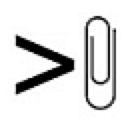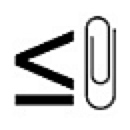
Karl J Sherlock
Associate Professor, English
Email: karl.sherlock@gcccd.edu
Phone: 619-644-7871
Sometimes sentence diagramming can be a frustrating process, especially when you're struggling to identify the parts of speech involved. If, in your mind, you can "see" words as their parts of speech, you may have an easier time relating those parts together. This section offers some pictographic suggestions for conceptualizing parts of speech, which you can then compose into an overall illustration of a sentence as you would in a sentence diagram.
 |
NOUNS
Because nouns are, ostensibly, things--whether subjects or objects--a good, solid cube or a 3-D box is a nice way to represent them. Cubes also have six sides, to represent six "things" that nouns can be: persons, places, animate objects, inanimate objects, concepts, and systems. Cubes are simple to draw, but you can also write "N" on it for yourself to remind you it represents a noun. |
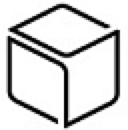 |
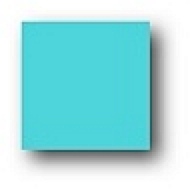 |
PRONOUNS
Because pronouns are words that stand in for nouns, a square is an apt symbol for them: a "flatter" version of a noun. You can write the letter "P" inside a square, if it helps to remind you to think "Pronouns." |
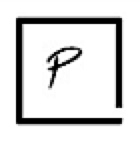 |
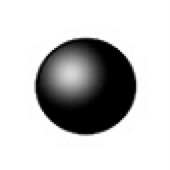 |
VERBS
Verbs imply action, even though not all verbs are active. No matter. Choosing a symbol that represents a sense of action is all that's needed,and a ball does a good job of that. A sphere is easily put into motion as a ball. So, drawing a ball to represent verbs works well enough. |
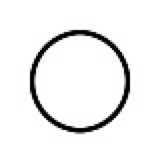 |
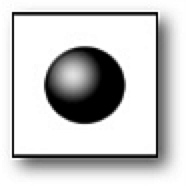 |
VERBALS
Verbals don't communicate action so much as activity, whether as a thing or as a modifier. That's why a snapshot of a ball is a good choice to represent a verbal. The simplest way to draw it is to put a circle in a box, to suggest a photo of a ball in motion. |
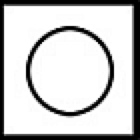 |
 |
ADJECTIVES
Adjectives modify nouns and add descriptive detail, so an artist's paintbrush seems to capture the spirit of what an adjective does. If a picture paints a thousand words, than a paintbrush provides a good many of the adjectives among those words. You can draw a paintbrush any way you like, but, if it's easier for you, you might just draw the bristles. Or, if you're not comfortable drawing paintbrushes, a puzzle-piece captures the same idea: one detail in a complete picture. |
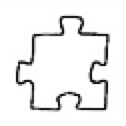 |
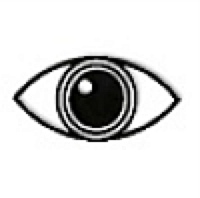 |
ADVERBS
Adverbs modify actions, activities, and other modifiers. That's why something that "follows the action," whatever that is, provides the best kind of icon to represent adverbs. An eyewitness, for instance, is someone who reports the action, the way that an adverb commentates or reports on an activity. |
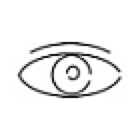 |
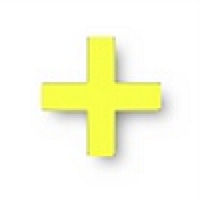 |
CONJUNCTIONS
It doesn't matter what kind of conjunction it is, every conjunction joins two or more things, so a plus symbol is a straightforward representation of that. If you prefer something like a paperclip, though, or some other fastener, go with your instinct. |
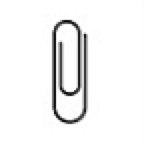 |
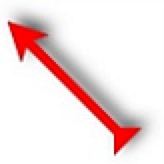 |
PREPOSITIONS
These little words are difficult to describe sometimes. In just about any language, a good many idioms depend on them. However, prepositions do have some common denominators: many of them orient one thing to another in a spatial or time-related direction. That's why a compass needle or a weather vane does a good job of depicting the concept. |
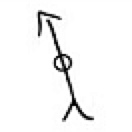 |
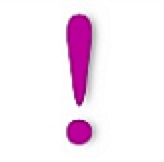 |
INTERJECTIONS
Interjections are not always exclamations, but exclamatory shouts are frequently interjections. That's why an exclamation point does a good job of expressing the spirit of an interjection. |
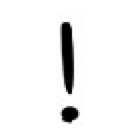 |
|
|
ADAPTING CONCEPTS
Once you're comfortable conceptualizing the main parts of speech, you can then begin imagining the way that these concepts come together to form individual parts of speech. For instance, a Conjunctive Adverb introduces a new sentence in the mood of a conjunction, but it is an adverb commenting on the action. Therefore, a combination of a conjunction and an adverb might help you to "see" the concept of a Conjunctive Adverb. Subordinating Conjunctions and Correlative Conjunctions might be distinguished from each other with the addition of some common mathematical signs. A participle might combine a puzzle-piece with a ball, to suggest an adjective that forms from a verb. |
|
You can't go wrong if you try to be creative, because imagining how these different concepts can be depicted makes you do the work of defining them and understanding them for yourself. |
||
Karl J Sherlock
Associate Professor, English
Email: karl.sherlock@gcccd.edu
Phone: 619-644-7871

8800 Grossmont College Drive
El Cajon, California 92020
619-644-7000
Accessibility
Social Media Accounts


